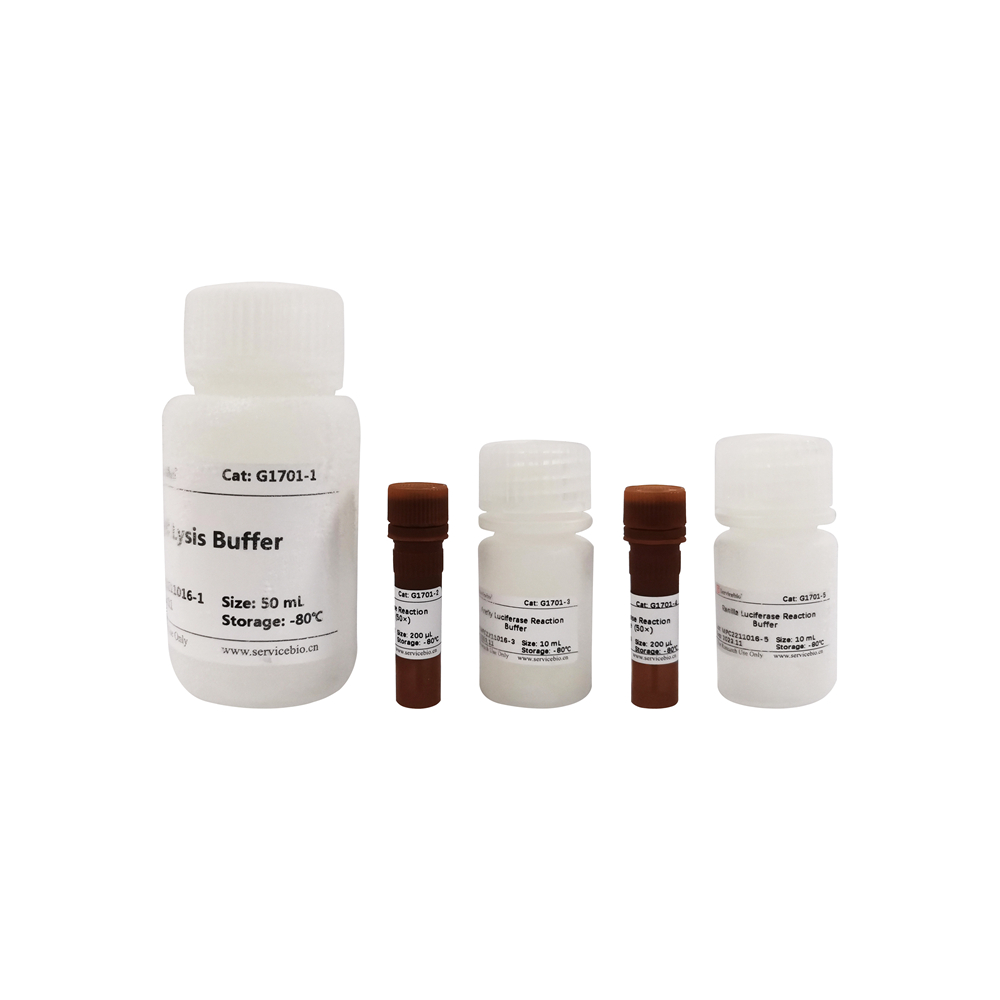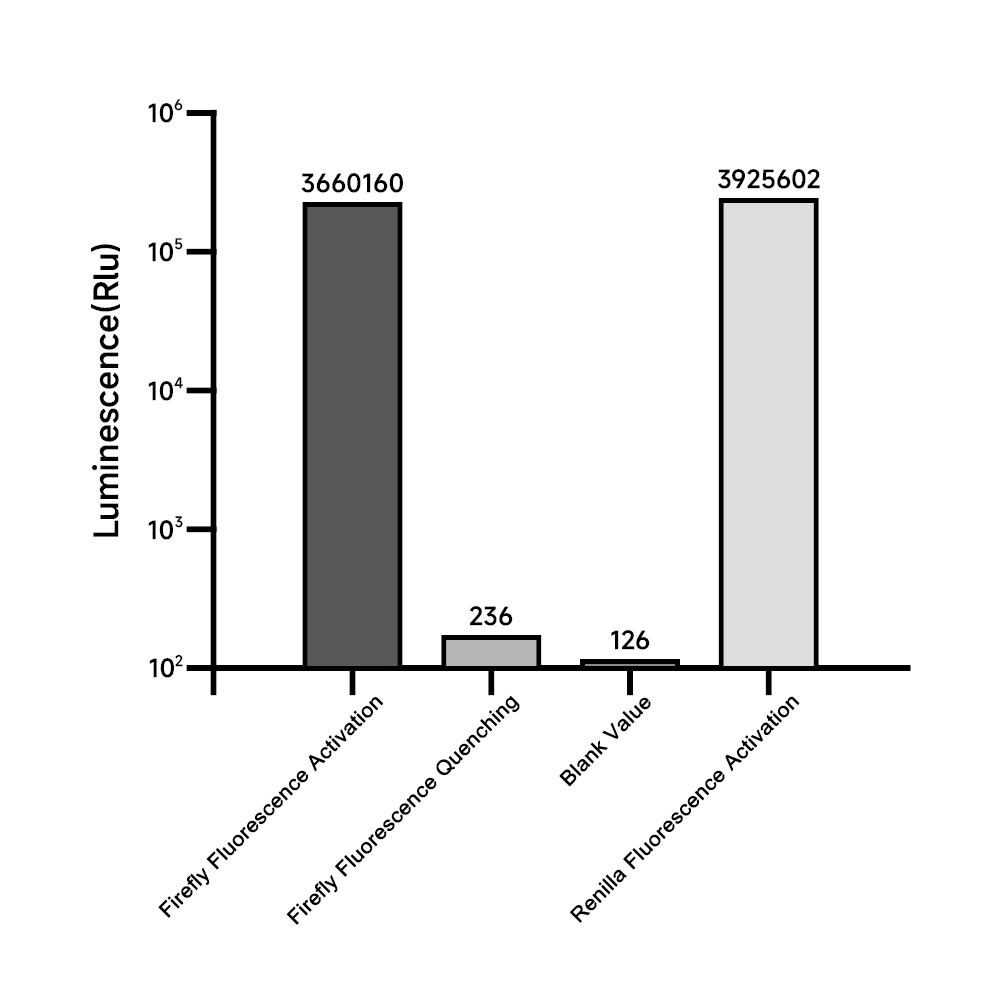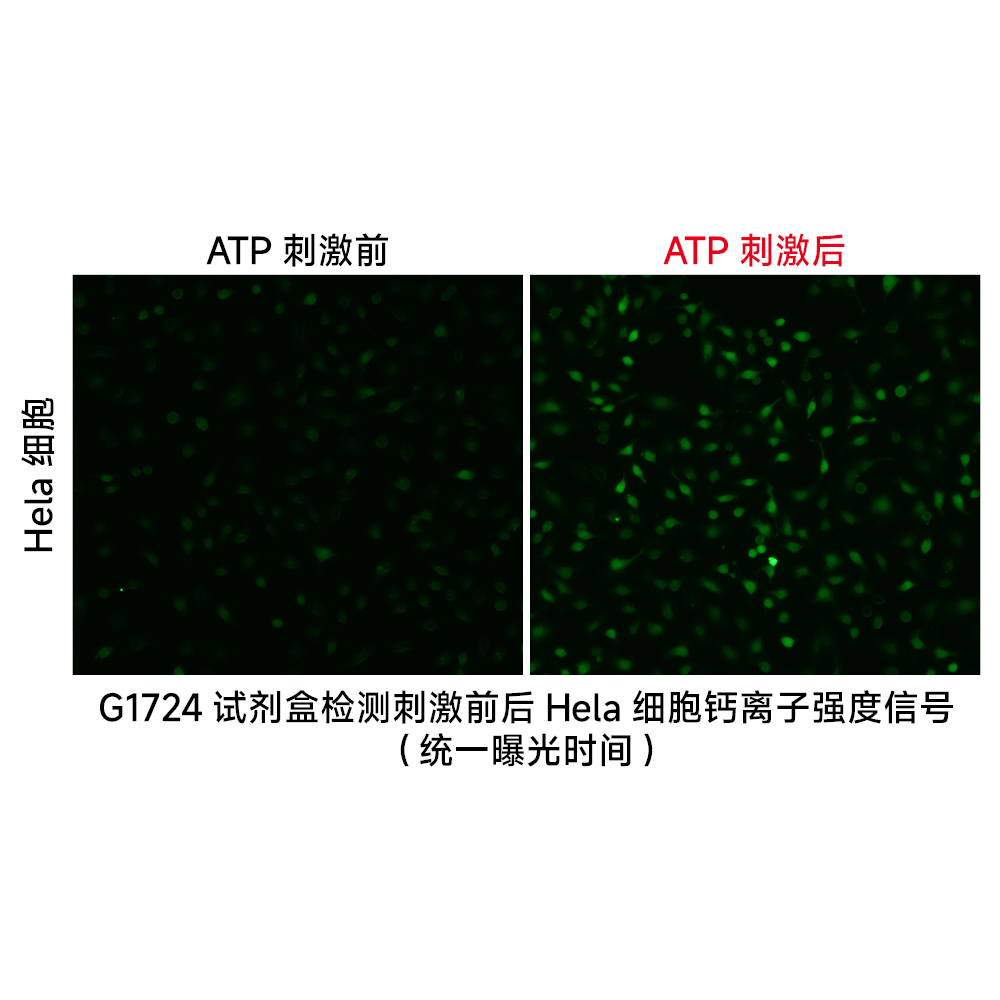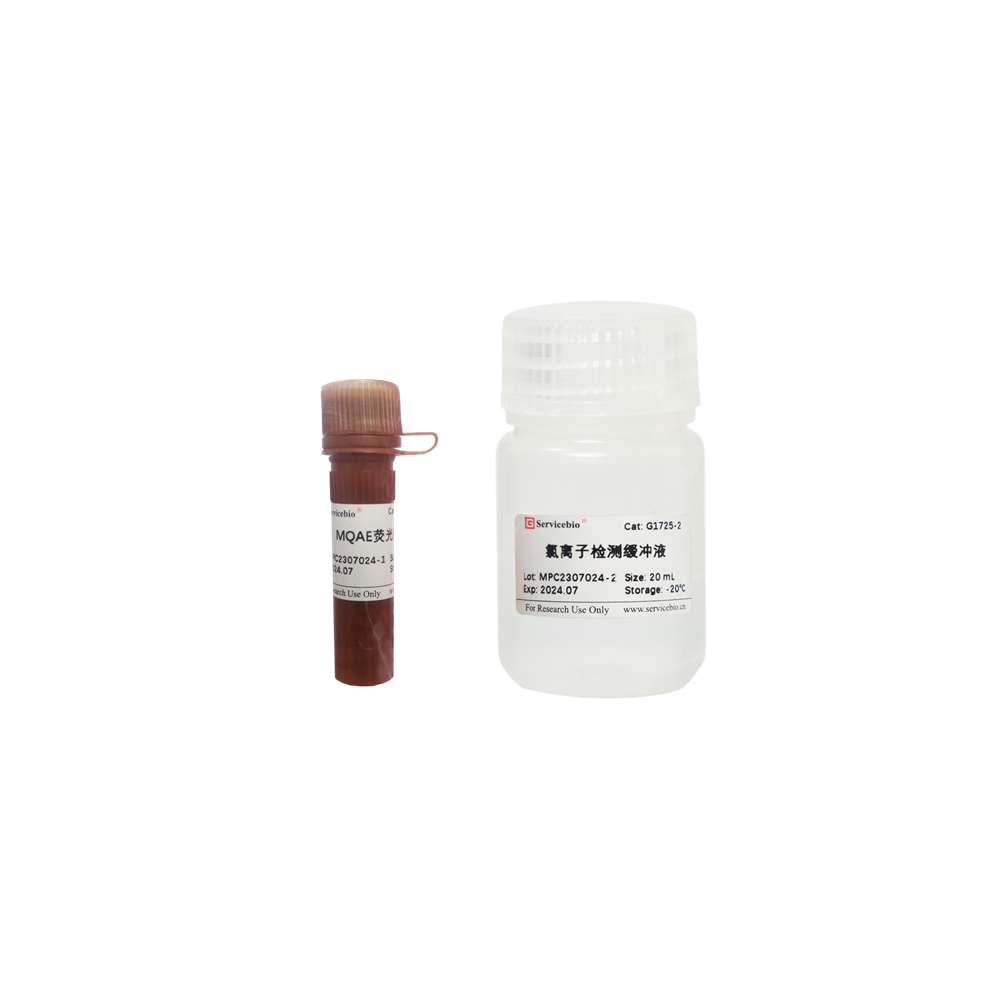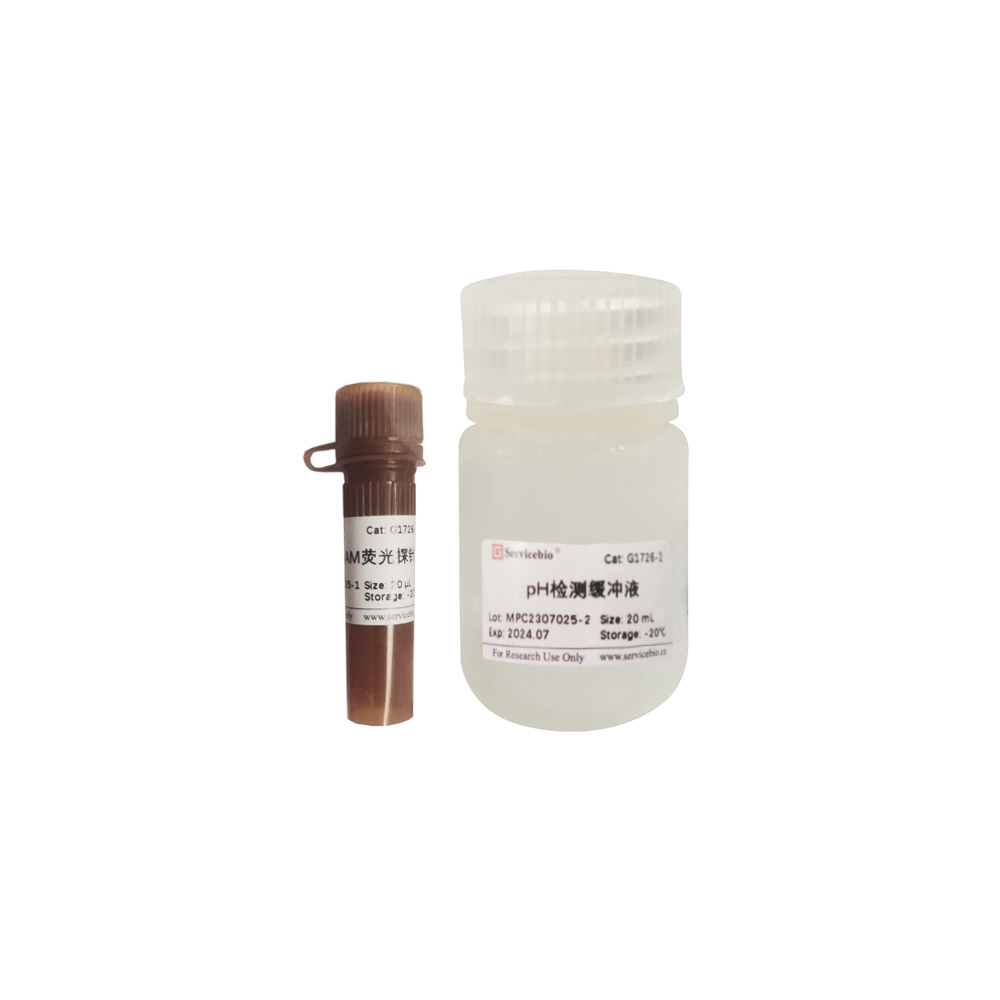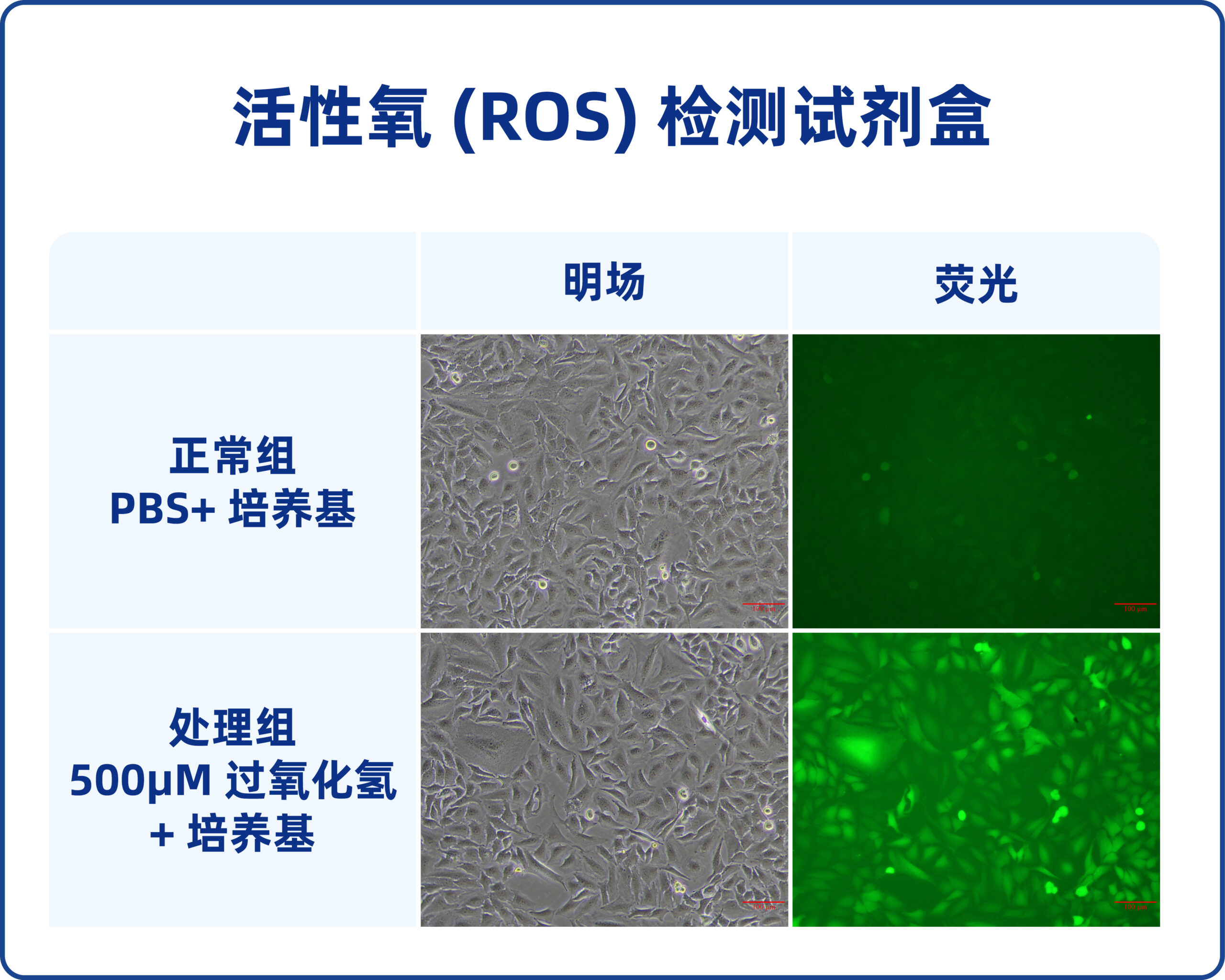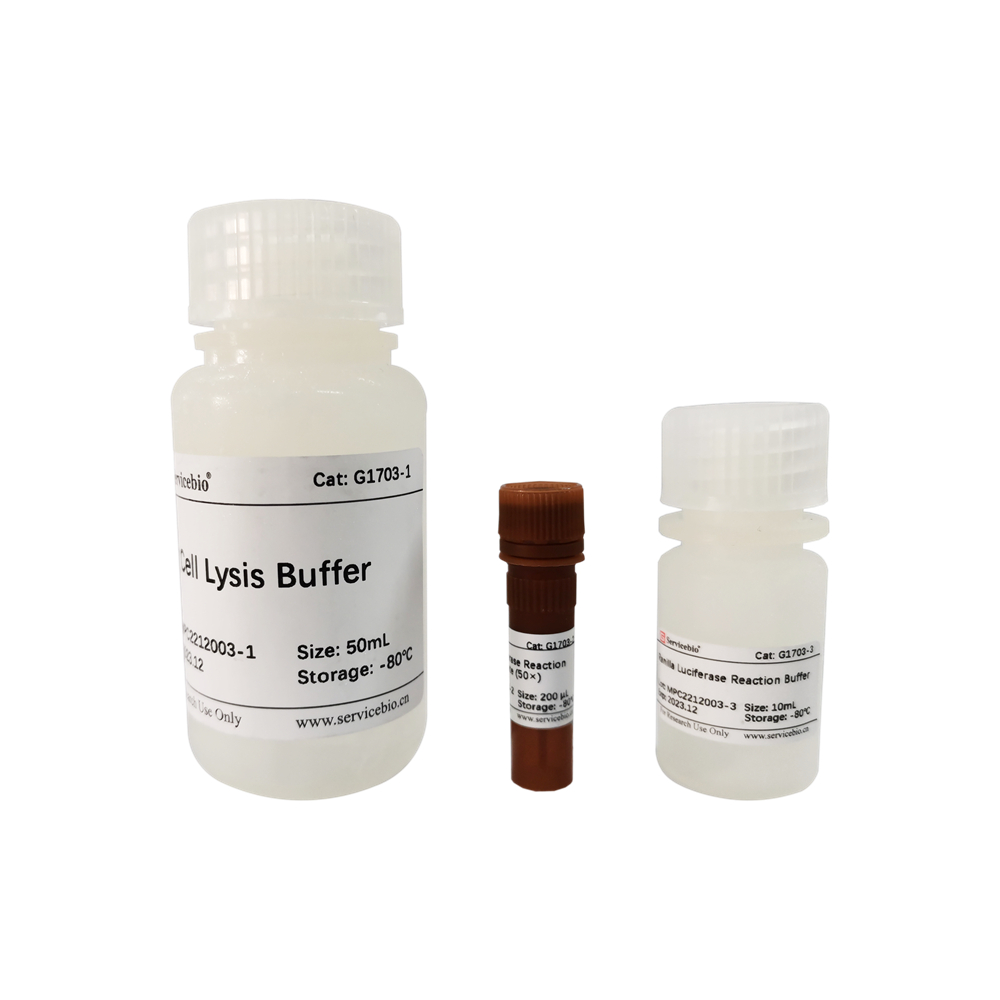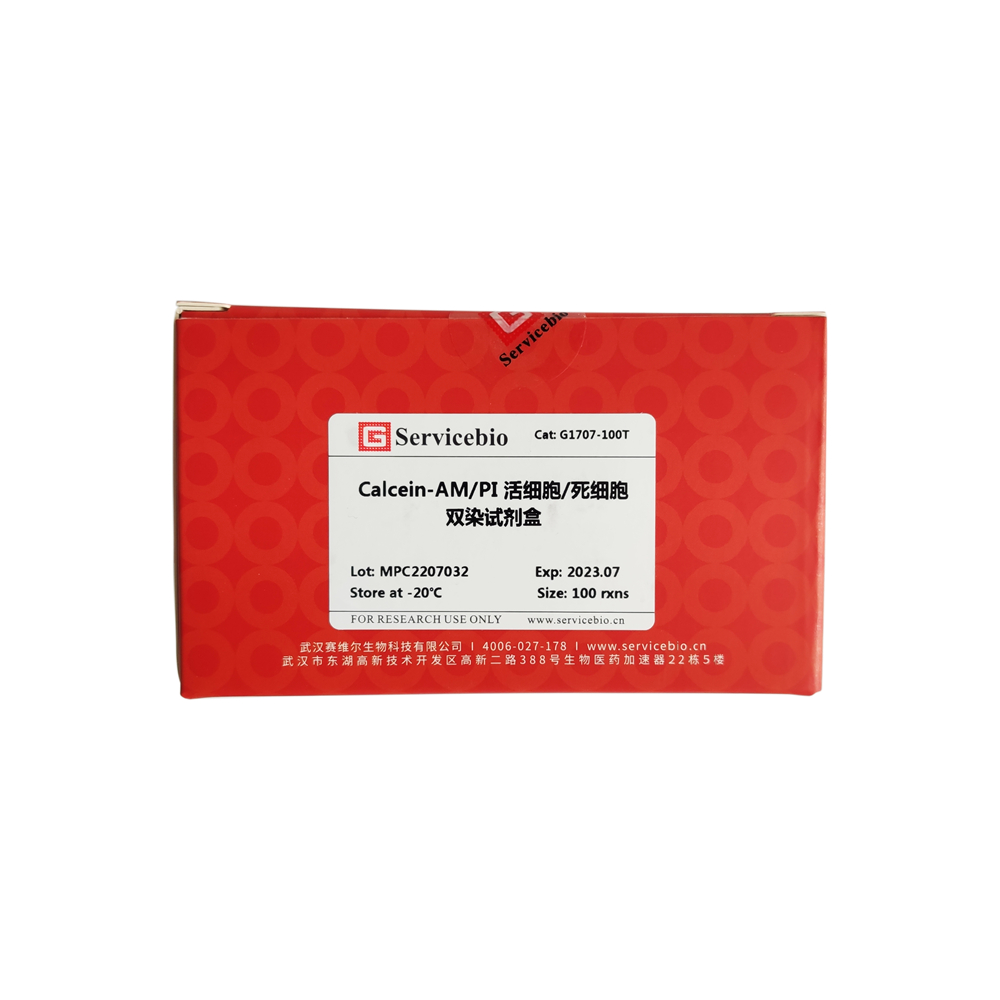Description
Product Information
| Product Name | Cat. No. | Spec. |
| Dual-Lumi Dual-Luciferase Reporter Gene Assay Kit | G1701-100T | 100T |
Product Description
Luciferase system is mostly used for reporter gene detection. The transcriptional regulatory elements of the target gene are cloned into the upstream and downstream of Luciferase to construct a reporter gene plasmid. The transfected cells are then treated with drugs or other stimuli, and then the cells are collected and lysed, and the luciferase activity in the lysate is measured. The transcriptional regulation effect of exogenous stimuli, such as drugs, on target genes is determined by luciferase activity. In the dual fluorescence system, two kinds of fluorescence are introduced and detected without interfering with each other, one is used as the detection fluorescence, and the other is used as the internal reference fluorescence to eliminate the differences in the number of cells and the transfection efficiency.
This Dual-Lumi Dual Luciferase (Firefly&Ranilla Luciferase) Reporter Gene Assay Kit is designed to detect firefly luciferase activity by using firefly luciferin as a substrate first, and then detect ranilla luciferase activity by using coelenterazine as a substrate while quenching firefly fluorescence. The kit is characterized by rapid detection, high sensitivity, wide detection range, and the two kinds of fluorescence detection do not interfere with each other.
Storage and Shipping Conditions
Ship with dry ice; Store at -80℃ away from light for 12 months; -20 ℃ store away from light, recommended for use within 6 months.
Product Content
| Component Number | Component | G1701-100T |
| G1701-1 | Cell Lysis Buffer | 50 mL |
| G1701-2 | Firefly Luciferase Reaction Substrate (50×) | 200 μL |
| G1701-3 | Firefly Luciferase Reaction Buffer | 10 mL |
| G1701-4 | Ranilla Luciferase Reaction Substrate (50×) | 200 μL |
| G1701-5 | Ranilla Luciferase Reaction Buffer | 10 mL |
| Manual | 1 pc | |
Assay Protocol
1. Prepare 1× Firefly Luciferase Reaction working solution:
1.1. The kit is separated and thawed at room temperature and mixed upside down to ensure complete dissolution of the components. The Firefly Luciferase Reaction Substrate (50×) and Ranilla Luciferase Reaction Substrate (50×) should be thawed on ice and centrifuged for a short period of time to ensure that the reagents sink to the bottom of the tube;
1.2. Dilute the firefly luciferase reaction substrate (50×) 50 fold with firefly luciferase reaction buffer, i.e., 10 μL of firefly luciferase reaction substrate (50×) and 490 μL of firefly luciferase reaction buffer are mixed well to obtain 500 μL of 1× firefly luciferase reaction working solution for spare use;
1.3. The Ranilla Luciferase Reaction Substrate (50×) is diluted 50-fold with Ranilla Luciferase Reaction Buffer, i.e., 10 μL of Ranilla Luciferase Reaction Substrate (50×) is mixed with 490 μL of Ranilla Luciferase Reaction Buffer to obtain 500 μL of 1× sea kidney luciferase reaction working solution. Ranilla Luciferase Reaction Buffer mixed well to obtain 500 μL of 1× Ranilla Luciferase Reaction Substrate (50×);
Note: Prepare according to the dosage to avoid waste. It is recommended that the luciferase reaction working solution be used now and stored at -20℃ for use within one month to avoid repeated freezing and thawing.
2. Cell pretreatment and lysis:
2.1. Cells are implanted in the corresponding plates, and transfected or other related pre-treatments according to the experimental needs;
2.2. For adherent cells: after removing the original cell culture medium, add the corresponding amount of Cell Lysis Buffer according to the table below to cover the cells;For suspended cells, transfer the cells into a centrifuge tube, centrifuge to remove the medium, and add the corresponding amount of Cell Lysis Buffer to resuspend the cells according to the table below;
| Cell Culture Plate | Cell Lysis Buffer/well |
| 6-well | 500 μL |
| 12-well | 300 μL |
| 24-well | 200 μL |
| 48-well | 150 μL |
| 96-well | 100 μL |
2.3. After sufficient lysis for 10-20 min at room temperature, cells are scraped and collected in a 1.5 mL centrifuge tube, centrifuged at 4°C, 12000 g for 10 min, and the supernatant (cell lysate) is retained for spare use;
3. Fluorescence detection:
3.1. Pre-prepared 1× firefly luciferase reaction working solution and 1× Ranilla luciferase reaction working solution are equilibrated to room temperature;
3.2. 1× Firefly Luciferase Reaction Work Solution at 100 μL/well is added to an opaque white 96-well plate;
3.3. The cell lysis supernatant from step 2 is added to the 96-well plate above at 20 μL/well;
3.4. The horizontal oscillation is uniform, as soon as possible, use Luminometer, multifunctional enzyme marker with chemiluminescence detection module or other instruments that can detect bioluminescence, chemiluminescence detection — detection of firefly luciferase reporter gene activity (fluorescence intensity);
3.5. 1× Ranilla Luciferase Reaction Work Solution at 100 μL/well is added to the wells where firefly luciferase reporter gene activity has been detected as described above;
3.6. The horizontal oscillation is uniform, as soon as possible, use Luminometer, multifunctional enzyme marker with chemiluminescence detection module or other instruments that can detect bioluminescence, chemiluminescence detection — detection of Ranilla luciferase reporter gene activity (fluorescence intensity).
Note
1. Before detection, the 1× Firefly Luciferase Reaction working solution needs to be restored to room temperature before use.
2. Luciferase Reaction Buffer has some precipitation after thawing, which is a normal phenomenon, and it should be shaken well before use to ensure that it is completely dissolved.
3. 1×Luciferase reaction working solution is susceptible to oxidation, when conducting multi-sample detection, the addition of 1× Luciferase Reaction working solution should be controlled within a short period of time as far as possible, It is recommended to use multichannel pipette for sample addition and pay attention to whether the suction volume of each well of the pipette is consistent.
4. In order to prevent interference between wells, the use of opaque white well plates is recommended.
5. For your health and safety, please wear lab coat and gloves during operation.
For Research Use Only!
All items listed below are priced for this month and are available for sale at the lowest prices.
| Product Code | Product Name | Specification |
| G1701-100T | Dual-Lumi Dual Luciferase Reporter Gene Assay Kit | 100 T |
| G1702-100T | Mono-Lumi Firefly Luciferase Reporter Gene Assay Kit | 100 T |
| G1703-100T | Mono-Lumi Ranilla Luciferase Reporter Gene Assay Kit | 100 T |
| G1706-100T | ROS Detection Assay Kit | 100 T |
| G1725-100T | MQAE Fluorescent Chloride Ion Detection Assay Kit | 100 T |
| G1904-100T | Dihydroethidium (Superoxide Anion) Fluorescent Probe | 100 T |
| G1724-100T | Fluo-4 AM Fluorescent Calcium Ion Detection Assay Kit | 100 T |
| G1726-100T | BCECF, AM Fluorescent pH Detection Assay Kit | 100 T |

